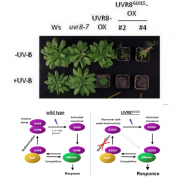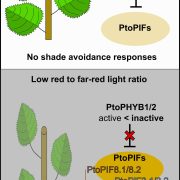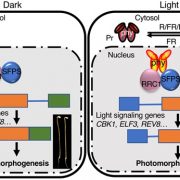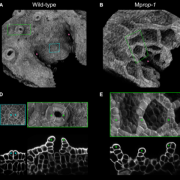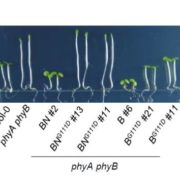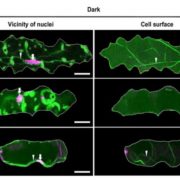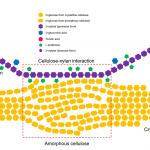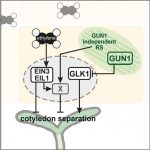SAURs protein antagonistically regulate a phosphatase activity during apical hook development and cotyledon opening (Plant Cell)

Upon germination in dark, plants adopt a strategy known as skotomorphogenesis, or etiolation, to protect the shoot apical meristem and cotyledon from damage while the seedling moves through the soil. The seedlings de-etiolate when they perceive light and the apical hook and cotyledon open. Wang et al. identified the Small Auxin Up RNA proteins SAUR17 and SAUR50 as cellular effectors of etiolation development. SAUR17 is highly expressed in the hook region and cotyledons of etiolated seedlings and serves to maintain the apical hook and closed cotyledons in dark. In contrast, SAUR50 promotes hook and cotyledon opening. Both SAURs bind to a clade D protein phosphatase 2C, PP2C-D1, a protein which also highly expressed in apical region and promotes cell expansion. Interestingly, SAUR17 binds more strongly to PP2C-D1 but does not inhibit its phosphatase activity, so functions as a protector to preserve PP2C-D1 activity against inhibition by SAUR50 in dark. Thus, the opposite functions of SAUR17 and SAUR50 to control apical hook development are mainly due to antagonistic regulation of PP2C-D1 in the dark. (Summary by Min May Wong @wongminmay) Plant Cell 10.1105/tpc.20.00283


